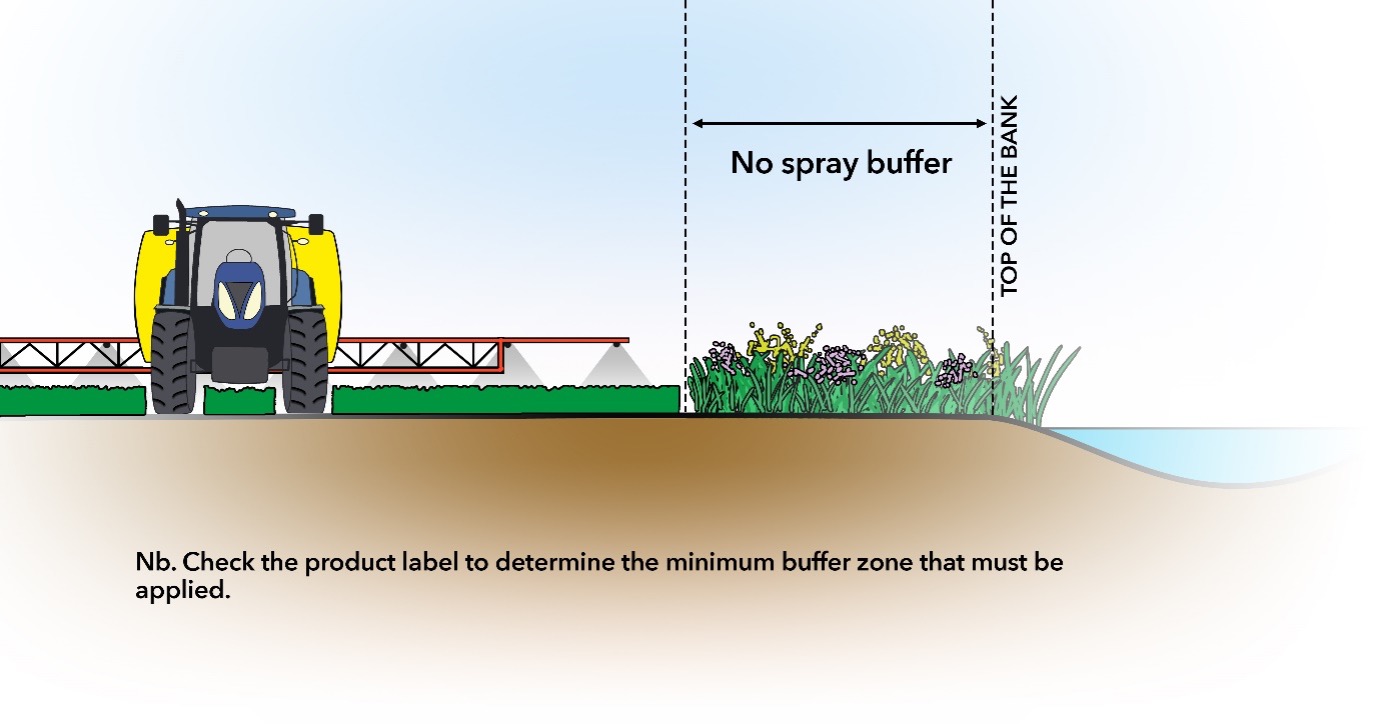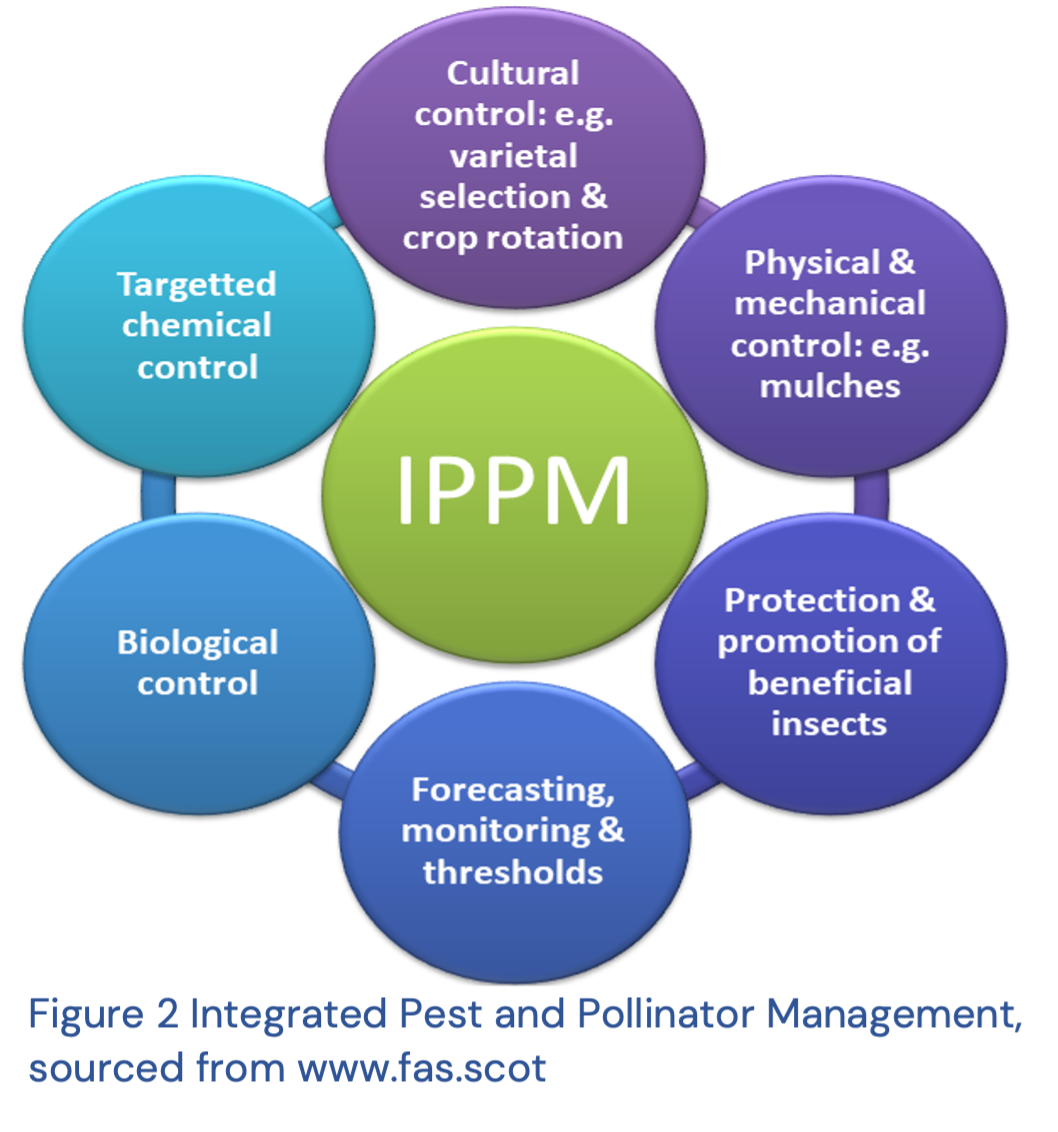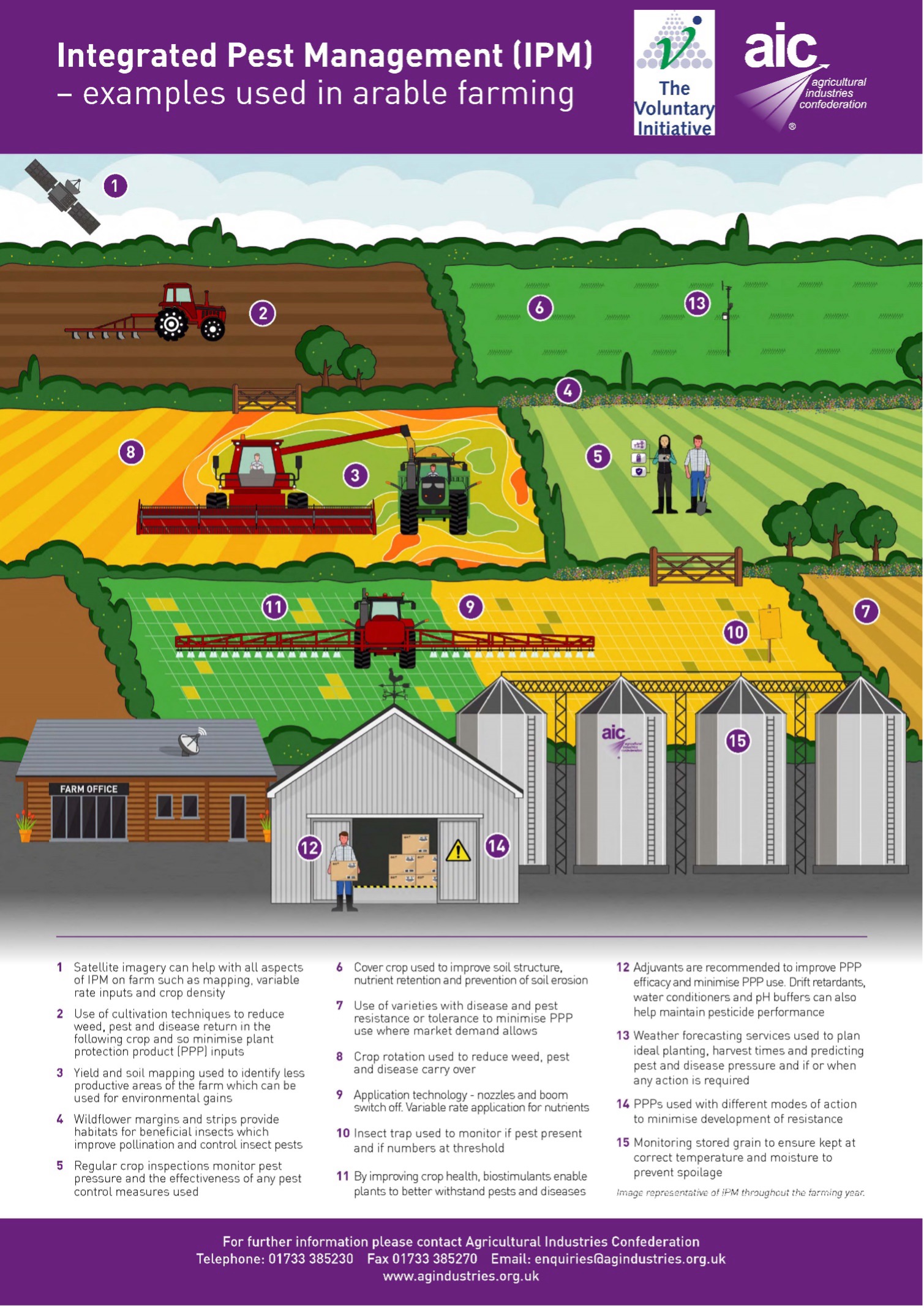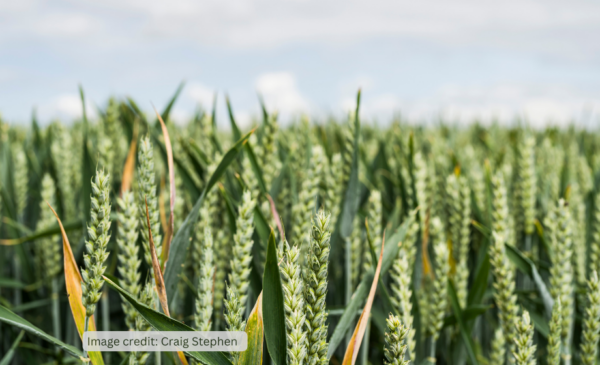Pesticides are plant protection products that are used to control pests, weeds and diseases. Please note that in legislation some of these chemicals may be defined as “biocides”. The most common variety on farm are: insecticide, fungicides, herbicides, molluscicides and plant growth regulators (full list can be found on Health and Safety Executive here). Pesticides have the potential to harm the environment and wildlife. In grassland and arable farming areas in particular, pesticides can contribute to diffuse pollution via field run-off, spray drift and accidental spillages. Users and operators of pesticides and their advisers must ensure that pesticides are used correctly.
For the purposes of this Code, pesticides include crop protection chemicals such as herbicides, fungicides, growth regulators and insecticides. They also include substances, preparations or organisms prepared or used as pesticides to protect plants or wood from harmful organisms or pests.
Pesticides are regulated by the Health and Safety Executive (HSE) and they have a dedicated webpages for these products Using pesticides and getting a plant protection product (PPP) to the market and Biocides regulation, supply and use. These pages provide key information on the use and supply of pesticides, which must be adhered to.
Health and Safety Executive website have all current legislation, which you must follow when supplying, using, storing and disposing of pesticides on farm.
Before you use pesticides, you must ensure that the pesticide is approved for use and this information can be found online:
- the Chemicals Regulation Directorate (CRD) – part of the Health & Safety Executive (HSE) – regulates plant protection products and biocidal products
In 2007 The Scottish Government produced Pesticides: Code of practice for using plant protection productions in Scotland. This Code of practice contains useful information, however, please note that you ensure that you comply with the most recent legislation, which will vary from that stated within the Code. The Health and Safety Executive have produced guidance on the use of pesticides, which should be consulted. The Farm Advisory Service have also produced Pesticide Management guidance which provides a useful reference on all aspects of pesticide management and legislation on farm.
Pesticide use must be carried out in accordance with current cross compliance legislation. Failure to do so could result in your payments being reduced. For more detail on cross compliance please visits Rural Payments and Services. In addition you must comply with the Restrictions on the use of plant protection products (SMR 10), Know the Rules Factsheet 12: Pesticides and General Binding Rules (GBRs).
Guidance can be found on best practice, available from the Voluntary Initiative, https://voluntaryinitiative.org.uk/. Please note some of the guidance is only for England and Wales so please check the specifications of the publications.
Where and when can pesticides be used?
Pesticides should only be used as part of an integrated approach where all available plant protection methods are considered. This approach contributes to a further reduction of the risks to human health, the environment and the dependency on the use of pesticides. Regular checks should be carried out on crops to inspect for disease, weed and pest infestation with any pesticide recommendations prepared by a BASIS approved advisor.
It is critical that you follow regulations and advice when applying pesticides. Pesticides can be extremely harmful to the environment and with their use and application must be conducted by qualified operators. Anyone who applies a professional pesticide product must hold an officially designated specified certificate for using machinery that has passed any necessary testing regimes. Pesticide application equipment, other than knapsacks and hand-helds, must have passed a test conducted by the National Sprayer Testing Scheme. Machinery must be calibrated and re-tested on a regular basis. The frequency of retesting depends on the type of machinery.
Pesticide labels should always be read before use and pesticides must only be used for the purposes for which they are approved. Even if a pesticide is used regularly, the label should be consulted as revisions do occur including changes to the legal requirements. If in any doubt about any aspects relating to pesticide use, a BASIS qualified adviser should be consulted.
Near Water buffer zones

Figure 1: No spray buffer zone
Pesticides must not be applied within 1 metre of any water course unless:
- the pesticide is approved for aquatic use and are applied according to the approval.
- it is applied for the control of invasive non-native species.
- no pesticide enters the water environment.
- the ground is not frozen, snow covered or waterlogged.
- it is not applied to impermeable surfaces that drain into water unless measures are put in place to prevent runoff entering the water.
The aquatic buffer zone can be reduced on some plant protection products under certain circumstances. If you want to reduce this aquatic buffer zone, there is a legal obligation to carry out and record a Local Environment Risk Assessment for Pesticides (LERAP). For horizontal boom sprayers it is only possible to reduce buffer zones of 5 metres; buffer zones of greater than 5 metres cannot be reduced. for details see the Local Environmental Risk Assessment for Pesticides (LERAP) section.
Please note that there are exemptions when controlling invasive non-native species.
Integrated pest management (IPM) is a whole farm approach to managing the land, maximising the efficiency of production whilst minimising negative effects on the environment.  Focusing on pest control methods, which can help reduce the reliance on pesticide use. IPM focuses on allowing the farmer to reduce their reliance on pesticides by incorporating alternative management practices into their business, such as:
Focusing on pest control methods, which can help reduce the reliance on pesticide use. IPM focuses on allowing the farmer to reduce their reliance on pesticides by incorporating alternative management practices into their business, such as:
- Alternative crop rotations, including resistant varieties,
- Efficient and tailored chemical use of fertilisers and pesticides,
- Enhance wildlife habitats to encourage natural biological control,
- Using technology to forecast and treat pest, weeds and disease.
Other examples can be seen in Figure 3. To integrate IMP into your farm you can carryout a Scottish IMP Assessment Plan, detailed below.
Scottish IMP Assessment Plan
A Scottish IMP Assessment Plan (previously called integrated pest management plan) is a whole farm approach to managing pests on farm, while minimising negative environmental impacts. The plan requires data to be inputted annually from the farmer with the first year acting as a baseline, The plan is then updated in subsequent years , allowing for ongoing improvements to be targeted and implemented.. The plan highlights areas where farmers can focus to improve productivity, follow more sustainable practices and strive to reduce the requirement/reliance on pesticide use.
Many farm assurance schemes now require an IPM plan.

Figure 3: Integrated Pest Management, Source: Voluntary Initiative at https://voluntaryinitiative.org.uk/media/b4uowu42/aic-ipm-arable-infographic-final_vi.pdf
Pesticide stores must be secure, capable of retaining any leakages or spillages, resistant to fire, frost free and have adequate ventilation. Stores must not be sited in areas where there is a risk of pollution to watercourses or groundwater. The Farm Advisory Service have produced a Pesticide Store Management guide and Farming Water Scotland Know the Rules Factsheet 12 has key information to ensure that you comply with the regulations.
Pesticides should not be stored:
- within 10 metres of the water environment.
- within 50 metres of any spring that supplies water for human consumption, or any well or borehole (unless the well or borehole is capped to prevent the ingress of pesticides).
- on an impermeable surface, which drains to a surface water drainage system.
The only exception to the above conditions is if the pesticide is stored in a manner that ensures that no leaks or spills can reach the water environment or surface water drainage systems (including by rainfall).
Your store needs to be large enough to store the maximum volume of pesticides you are likely to keep on site, this needs to allow for:
- the farm’s peak pesticide requirements.
- any full, or part, containers remaining from previous applications.
- any chemicals, which have been unable to be applied.
- any hazardous waste.
- slug pellets, rodenticides and wood treatment chemicals.
A chemical store should be large enough for its intended use and allow personnel to operate safely. In addition, you must ensure that the store is constructed of fire-resistant materials, including fireproof walls for a minimum of 30 minutes and ensure that the store is located:
- a minimum of four meters from combustible material.
- located away from residential properties.
- located away from overhead powerlines.
- located on good access routes for good and emergency service vehicles to access.
Make sure that you regularly check your storage containers for signs of damage or deterioration. Ensuring that your chemicals are safely stored protects personnel and can prevent accidental environmental damage. You should keep an up-to-date record of all contents of your chemical store. By doing this you can:
- help with stock rotation and control.
- keep an accurate and up-to-date list of the contents of the chemical store if there is an emergency.
- avoid overstocking.
- help you to make sure that you do not have any unapproved or unwanted pesticide products.
- help you to use up oldest stocks first to avoid deterioration.
It is illegal to store chemicals after the expiry date for the safe storage and usage has passed.
Full details of what you need to include in your records can be found on the Farm Advisory Service Pesticides – What records do I need to keep?.
- https://www.gov.scot/policies/agriculture-and-the-environment/pesticides/
- https://www.gov.scot/publications/pesticides-code-practice-using-plant-protection-products-scotland/
- http://www.legislation.gov.uk/uksi/2012/1657/pdfs/uksi_20121657_en.pdf
- http://eur-lex.europa.eu/LexUriServ/LexUriServ.do?uri=OJ:L:2009:309:0071:0086:EN:PDF
- https://assets.publishing.service.gov.uk/media/5a7c0154e5274a7318b90733/pb13894-nap-pesticides-20130226.pdf
- https://amenityforum.co.uk/
- https://www.netregs.org.uk/environmental-topics/materials-fuels-and-equipment/materials-and-equipment-for-agriculture-animal-care/spraying-pesticides/
- https://www.netregs.org.uk/legislation/scotland-environmental-legislation/current-legislation/pesticides-and-biocides/
- https://www.fas.scot/environment/water-management/pesticide-management/pesticides-records/
- https://www.farmingandwaterscotland.org/arable/pesticides/
- https://www.farmingandwaterscotland.org/wp-content/uploads/2022/11/KTR12Pesticides.pdf
- https://www.bcpc.org/product/uk-pesticide-guide-2024
Related resources

Integrated Pest Management and the Voluntary Initiative
How can you improve pesticide management on farm?
How can you improve pesticide management on farm? In this podcast we chat with Neal…

